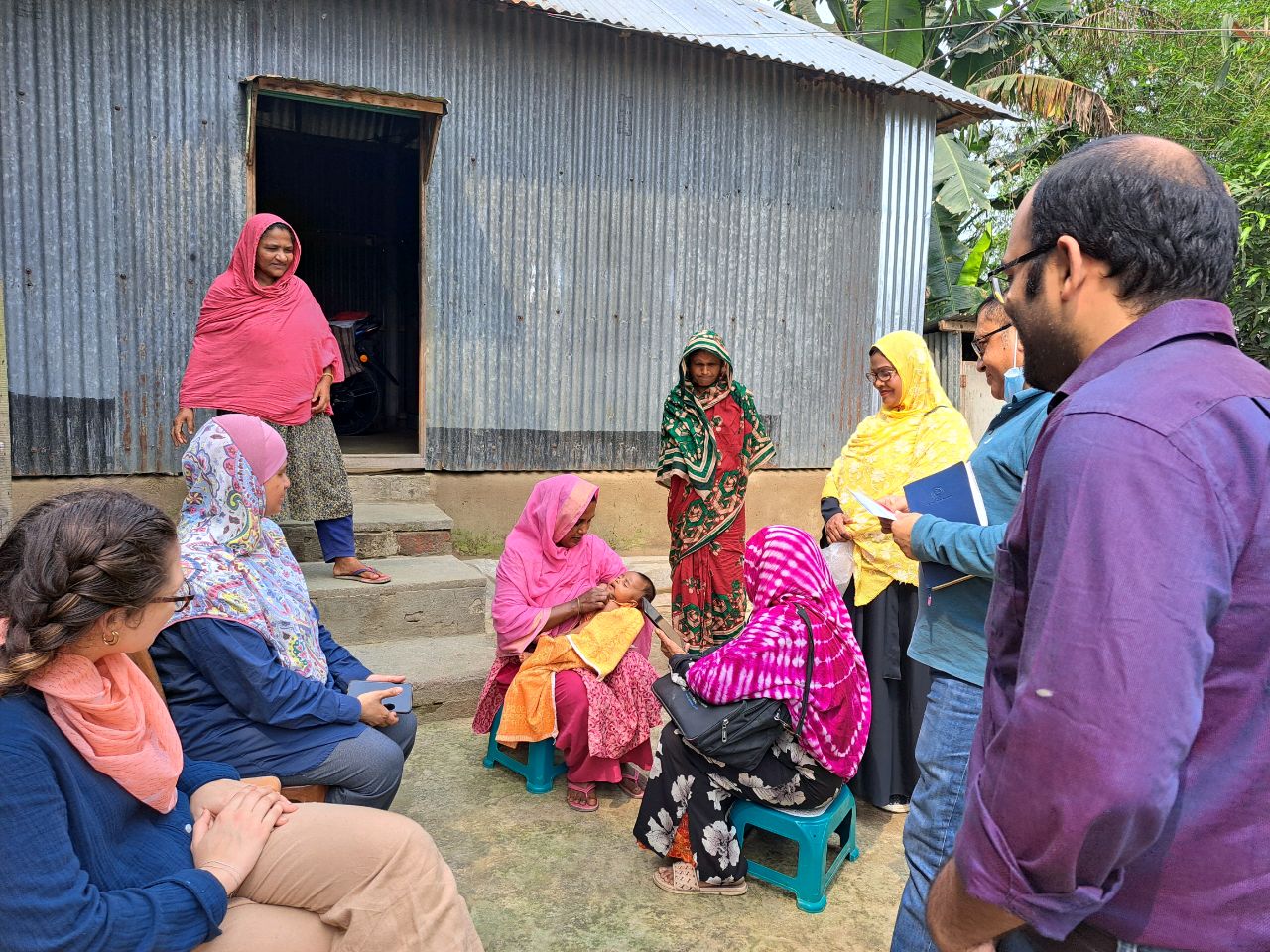
To track maternal and child health and sociodemographic changes at the community level, in collaboration with our partners, we have been operating a Demographic Surveillance System (DSS) since 2007. The initial infrastructure for developing this system dates back to 2003 from the Maternal and Newborn Intervention Study funded by Wellcome Trust.
The DSS is based in Mirzapur, a rural sub-district of Bangladesh, 65 km north of Dhaka, consisting of 10 unions and 156 villages. The DSS catchment area is divided into 19 clusters, each consisting of 4000 households, further classified into 80 blocks of 50 households. A group of community health workers complete data collection from all 4000 households every 4 months.
Information regarding vital events like migration, pregnancy and its outcomes, and birth and deaths of the people residing in the individual households are collected during each visit. Additionally, sociodemographic information, vaccination status of under-5 children and women’s reproductive history are collected. Furthermore, each child is provided with a smart card after enrollment to track their progress and healthcare needs within the DSS area of Mirzapur.
Latest estimates from 2022 show a total of 317,588 population with a sex-specific ratio of 53% female residing within the catchment area of DSS. The DSS has 28,007 of the under-5 population with an estimated annual birth cohort of 10,400. The crude birth estimate in the DSS infrastructure is 11.5 per 1000, while the crude death rate is 5.12 per 1000 population.
The latest estimates also demonstrate an increase in child survival with lower estimates of all metrics of childhood mortality. The under-5 mortality stands at 26.2 per 1000 live birth, while the infant and neonatal mortality rate is 22.5 per 1000 live births and 16 per 1000 live birth.
The DSS infrastructure has been leveraged to generate evidence bridging the healthcare access gaps to technologies and diagnostics in rural communities. We have been supported to conducted various studies leveraging the DSS.
A community infectious disease surveillance is nested in the DSS area. Every week, ~60 village health workers (VHWs) visit about 16,000 under-5 children. They primarily screen the children for any sign/symptom compatible with WHO Invasive Bacterial Vaccine Preventable DIsease surveillance and refer any sick children to our study hospital in Mirzapur, KWMCH. Study physicians, based at KWMCH, identify any suspected IB-VPD cases coming from population-based site to KWMCH out-and in-patient departments.
